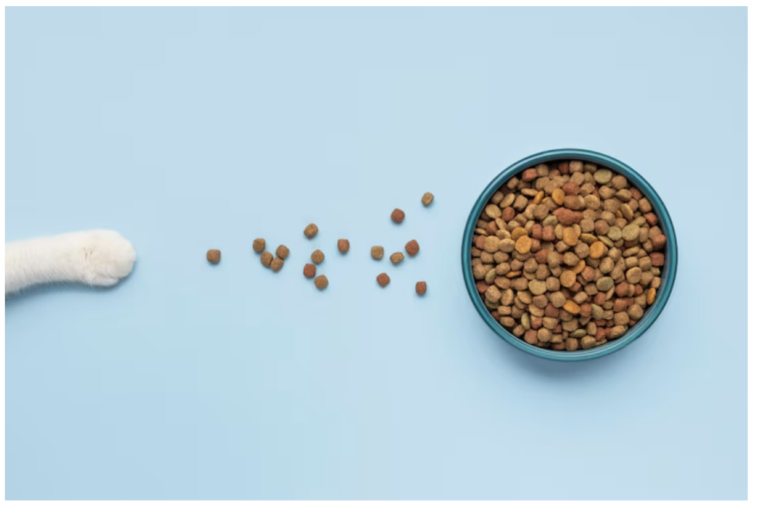Why Dry Cat Food Might Be the Best Choice for Your Cat’s Diet
Are you wondering what type of food is best for your feline friend? Well, look no further because we may have the answer for you. This article will explore why dry cat food might be the perfect choice for your cat’s diet. Dry cat food offers numerous benefits you and your kitty will appreciate. First and foremost, it is highly convenient. With dry food, there’s no need to worry about refrigeration or spoilage, making it easy to store and serve.
Additionally, dry cat food promotes dental health by helping to remove tartar and plaque buildup. Many dry cat foods also contain added vitamins and minerals to ensure your cat receives a well-balanced diet. Moreover, dry cat food often contains high-quality protein sources and essential nutrients, which are essential for your cat’s overall well-being. It is a convenient and cost-effective option, providing much-needed nutrition for your furry friend. So, if you’re on the fence about which type of food to choose for your cat, consider trying dry cat food. Keep reading to discover more about the benefits of dry cat food and why it might be the best choice for your cat’s diet.
Understanding Your Cat’s Dietary Needs
Before diving into why dry cat food might be the best option, it’s crucial to understand what your cat needs in its diet. Cats are obligate carnivores, meaning they require a diet high in protein and specific nutrients like taurine, arachidonic acid, and certain vitamins primarily found in animal tissues. A balanced diet ensures that your cat stays healthy and energetic.
The Benefits of Dry Cat Food
Convenience and Storage
One of the most apparent benefits of dry cat food is its easy storage. Unlike wet food, which requires refrigeration and can spoil quickly, dry food can be kept at room temperature and lasts longer once opened. This makes it perfect for busy pet owners who don’t want the hassle of constantly monitoring their cat’s food supply.
Dental Health Advantages
Did you know that dry cat food can help your cat’s dental health? The crunchy texture helps reduce tartar buildup and plaque, keeping your cat’s teeth and gums healthier. While it’s no replacement for regular veterinary check-ups, dry food can provide additional dental care.
Nutritional Value of Dry Cat Food
High-Quality Protein Sources
Dry cat food is often packed with high-quality proteins like chicken, fish, or turkey. These protein sources are essential for muscle development, organ function, and overall vitality. Many brands offer recipes rich in animal-based proteins tailored to your cat’s predatory nature.
Essential Nutrients for Health
In addition to protein, dry cat food typically contains other essential nutrients such as omega fatty acids, vitamins, and minerals. These ingredients contribute to your cat’s skin, coat health, immune function, and more.
Common Misconceptions About Dry Cat Food
A common myth is that dry food is less nutritious than wet food. However, most high-quality dry foods are formulated to meet the same nutritional standards. Another misconception is that dry food leads to dehydration, but your cat will stay hydrated as long as fresh water is available.
Choosing the Right Dry Cat Food for Your Cat
Checking Ingredients
When choosing dry food for your cat, it’s essential to read the ingredients. Look for foods with animal proteins listed first and avoid options that contain too many fillers, such as corn or soy. Some foods are designed to target specific issues, such as hairball control, urinary health, or weight management.
Considering Age and Health Conditions
Kittens, adult cats, and senior cats all have different dietary needs. Select a dry food that aligns with your cat’s age and any health issues they may have, such as allergies or digestive sensitivities.
Transitioning Your Cat to a Dry Food Diet
Switching your cat’s diet from wet to dry requires a gradual transition. Start by mixing small amounts of dry food with their current food, and slowly increase the dry food ratio over a week or two. This gradual shift prevents digestive upset and helps your cat adapt to the new texture and flavour.
Tips for Feeding Your Cat Dry Food
Portion Control
It’s easy to overfeed cats with dry food, since it’s calorie-dense. Follow the portion guidelines on the package to ensure your cat isn’t overeating, which can lead to obesity.
Water Intake Management
Because dry food has a lower moisture content, ensure your cat always has access to fresh water. Consider using a cat water fountain to encourage more drinking, as many cats prefer moving water.
Potential Drawbacks of Dry Cat Food
While dry food offers numerous benefits, it could be better. Some cats may not drink enough water, which can lead to urinary issues. Additionally, the higher carbohydrate content in some dry foods can be less ideal for cats with weight issues or diabetes.
Other Dietary Options for Cats
Wet Food
Wet food is another popular option. It offers a high moisture content, which is beneficial for cats prone to urinary issues. However, it can be more expensive and requires refrigeration after opening.
Raw and Homemade Diets
Some cat owners opt for raw or homemade diets for a more natural feeding option. While these diets can offer excellent nutrition, they also require careful preparation to ensure your cat gets all the necessary nutrients.
Conclusion
When it comes to feeding your cat, dry food offers a balance of convenience, nutrition, and dental health benefits. While it may not be suitable for every cat, many felines thrive on a diet of high-quality dry food. Be sure to consider your cat’s specific needs, read labels carefully, and consult your vet if unsure which food is best for your pet.

